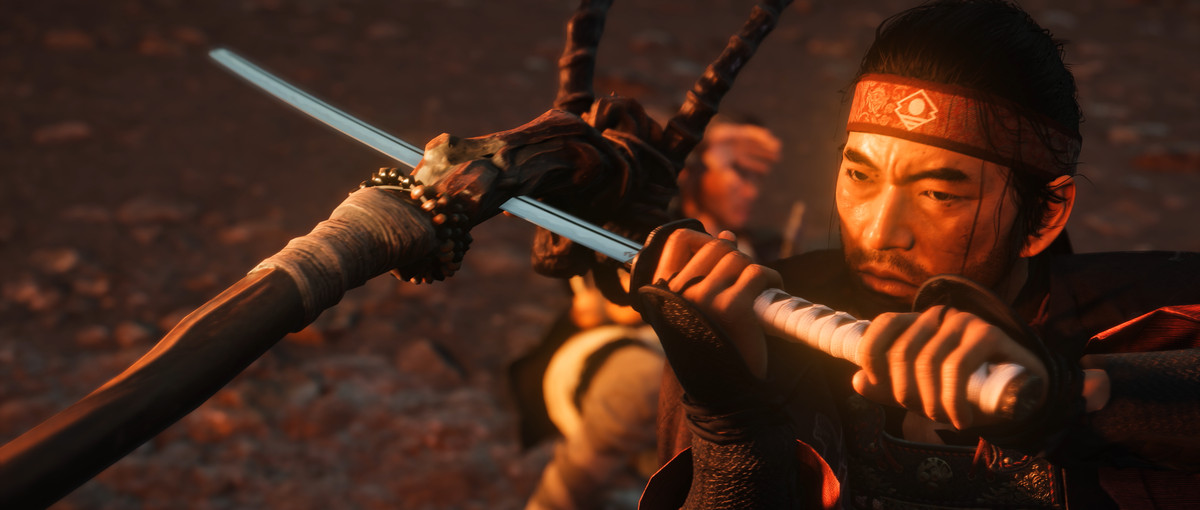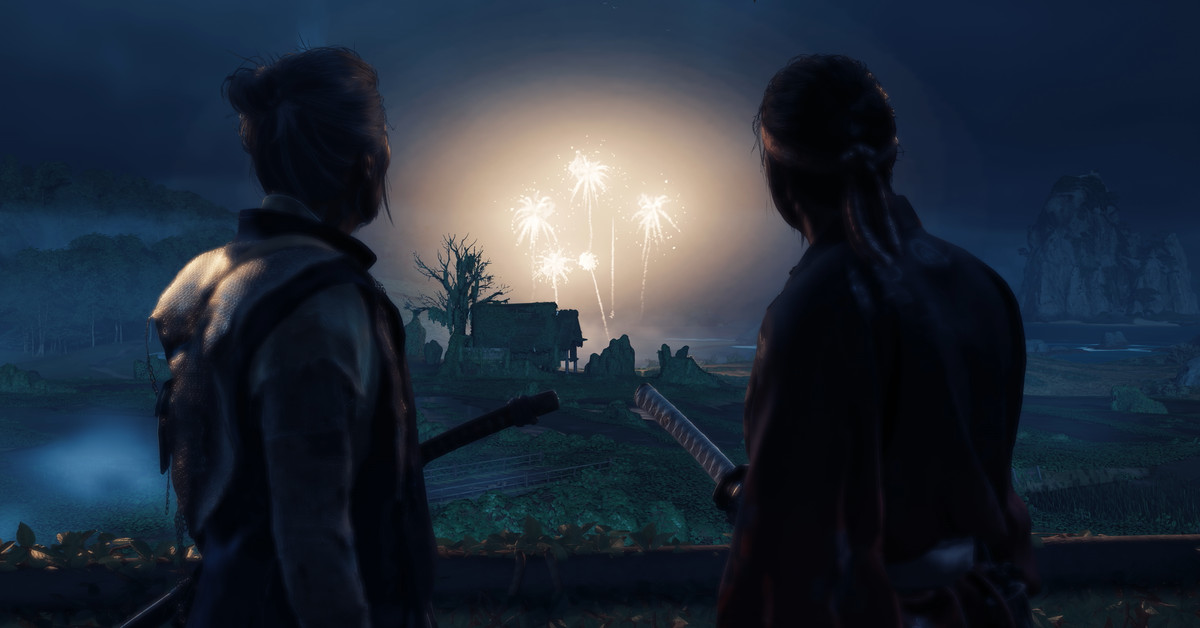There are two Ghost of Tsushimas. One is an exquisitely crafted open-world game that, while highly derivative, delivers one of the smoothest action-blockbuster experiences in recent memory — a gorgeous, finely tuned adventure that offers endless rewards with minimal friction to those that keep playing. The other is the video game version of a guy who only communicates in movie references, so in love with his idea of the films he endlessly recalls that it becomes impossible to connect with any person underneath. The former Ghost is flattering to consider. The latter is embarrassing.
The awkward title of the latest edition of the game, Ghost of Tsushima Director’s Cut, heightens that tension between these two philosophies of considering the game. It indicates that it is the best version of the samurai epic that made the 2024 PlayStation 4 exclusive a hit with players, but it does so with a term clumsily lifted from film, one that falls apart entirely when thought about for more than a second. (In what way is this a different “cut” of the video game? What was removed, or restored? Why doesn’t the original release deserve this distinction?)
Ghost of Tsushima is far from the only game to be re-released under this nomenclature, and it’s possible the developers at Sucker Punch feel the same way about it as Hideo Kojima — who noted that while a “director’s cut” of Death Stranding is being released, it’s not his preferred term. But Ghost of Tsushima, more than other games, invites that comparison, because it is openly an homage to a very narrow slice of samurai cinema: the kind that is idealized in the West, where it’s lovingly imported and reworked into Westerns or Star Wars.

Image: Sucker Punch Productions/Sony Interactive Entertainment
Inviting players to think about the world outside of its lovely little sandbox has proven to be troublesome for Ghost of Tsushima. The Kurosawa homage it purports to be falls apart when the acclaimed filmmaker’s catalog is seriously considered. Its status as a work of historical fiction is on similarly shaky ground, as its version of 13th-century Japan is one that appears to be steeped in propaganda more than actual history. Ghost of Tsushima’s admirably personal story saw protagonist Jin Sakai reconsidering the samurai way, but in practice, his examination was one of methodology, not one of politics or culture. Jin, the samurai of Tsushima, called out his foes to face them one on one on the battlefield in “honorable” duels. However, a Mongol invasion forced Jin to become a ghost, and deal “dishonorable” death from the shadows in order to save his home.
But the samurai way meant something different in history than it did in the main campaign of Ghost of Tsushima. The Iki Island expansion begins to interrogate that — if only briefly. It begins when Jin discovers a village suffering from a mysterious mental affliction. Upon arrival, Jin learns that another Mongol clan led by a shaman named Anshar Khatoun, known by her followers as The Eagle, is amassing power in the nearby Iki Island. This island holds great significance for Jin Sakai: It’s where he watched his father die.
That childhood trauma forms the spine of the expansion, and is the source of its most interesting ideas. The main Iki Island story finds Jin hiding his identity as the new Lord Sakai in order to defeat The Eagle with the help of the so-called raiders that killed his father. In his conversations with them, Jin is forced to consider another time, when the invaders were not Mongols, but samurai, and his father was the one committing the same sort of violence against the raiders that Jin detests the Mongols for.
This is all, according to the developers, in service of “a story about healing.” Across the new campaign’s roughly six-hour run time, Ghost of Tsushima’s Iki Island expansion introduces these ideas but never finds the room to dig into them, nor does it give much credence to the pain endured by the raiders. Jin’s alliance of convenience is amends enough, in the end. Ghost of Tsushima’s vision of healing does not involve justice, but the saccharine image of two people shaking hands across the aisle, reducing decades of violence to a mere disagreement that can be hashed out with some sick team-ups. (To be fair: The team-ups are sick.)

Image: Sucker Punch Productions/Sony Interactive Entertainment
One of the reasons Ghost of Tsushima is so compelling to play comes down to the developers’ commitment. While many reviews, including our own, belabored the fact that you’ve seen virtually everything Ghost of Tsushima has to offer done elsewhere, it is also a game so wholly committed to its samurai theming that all of its mass-marketed systems and mechanics feel bespoke. As the game asks you to do worn-out video game things —engaging in stealthy combat, or mixing up light and heavy attacks, to name a couple — it also lets you challenge foes to showdowns; it throws in duels that strip away everything but your sword in order to briefly transform into a deadly fighting game; it lets you play the flute to lure animals closer for petting. It does all this with a careful eye for presentation that steadily seeks to reward players while also getting out of their way. If Ghost of Tsushima was your first video game, it would be tempting to think they invented all of this for the first time.
The care present in Ghost of Tsushima’s design makes its undercooked take on its own ideas harder to forgive. Take its themes seriously, and it becomes a story about a feudal landlord learning that maybe life isn’t about him, but centering on him anyway. The Jin Sakai that players engage with through play — the Jin Sakai that composes haikus, loves animals enough to play them little tunes on his flute, who never met a row of bamboo he did not want to cut for fun — seems to have the interiority that the Jin Sakai of Ghost of Tsushima’s narrative does not. One is a thoughtful guy you might want to hang around. The other is not. He’s kind of embarrassing.
Ghost of Tsushima Director’s Cut was released on Aug. 20 on PlayStation 4 and PlayStation 5. The game was reviewed on PS5 using a pre-release download code provided by Sony Interactive Entertainment. Vox Media has affiliate partnerships. These do not influence editorial content, though Vox Media may earn commissions for products purchased via affiliate links. You can find additional information about Polygon’s ethics policy here.
Polygon – All
Source link
Related Post:
- Ghost of Tsushima: Director’s Cut Iki Island Detailed
- Ghost of Tsushima Director’s Cut includes a new story set on Iki Island
- Ghost of Tsushima Iki Island Expansion Has Animal Sanctuaries Where You Can Tame Monkeys, Cats, and Deer
- Ghost of Tsushima’s Iki Island Expansion -5 Reasons To Be Excited
- New Ghost Of Tsushima Director’s Cut Trailer Reveals More About Iki Island
- Ghost of Tsushima’s Iki Island expansion gets new trailer and more details • Eurogamer.net
- New Ghost of Tsushima Trailer Introduces Iki Island and Ankhsar Khatun
- Ghost of Tsushima Director’s Cut Receives New Iki Island Trailer
- Ghost of Tsushima's Iki Island Expansion – 5 BIG Reasons Why I Am Excited
- Ghost of Tsushima Director’s Cut and Iki Island DLC enhance one of the best PlayStation exclusives
